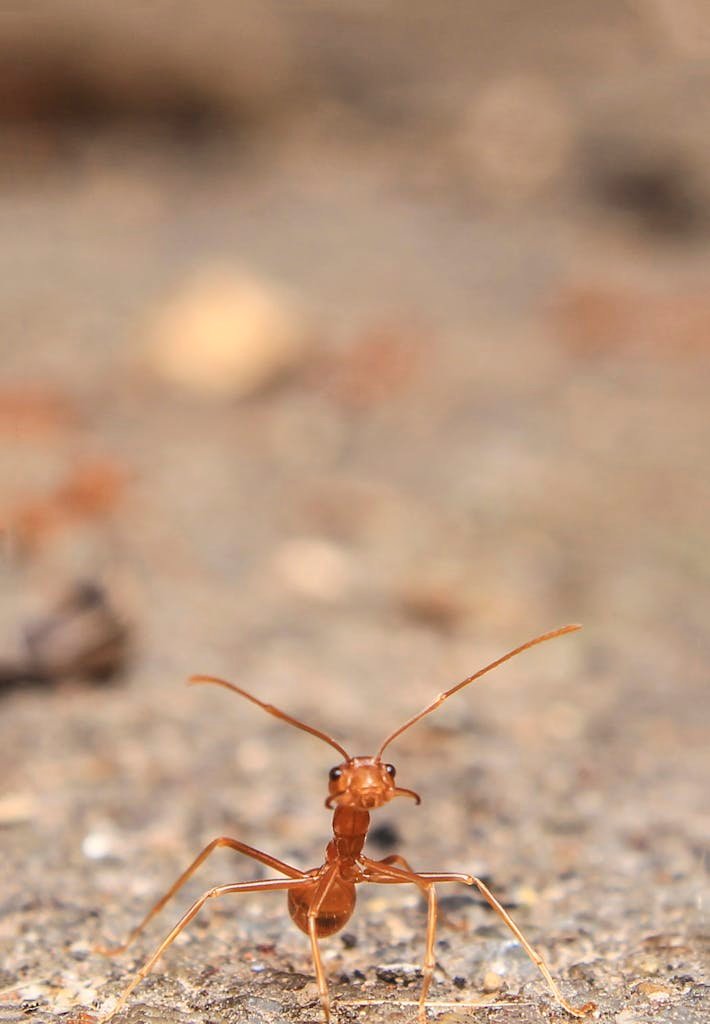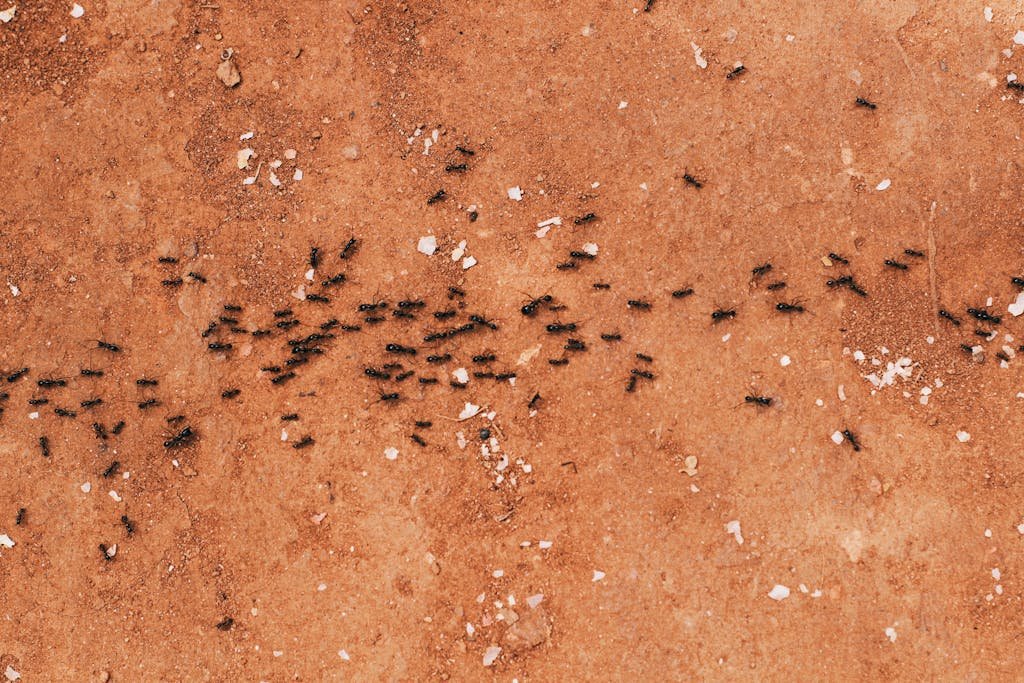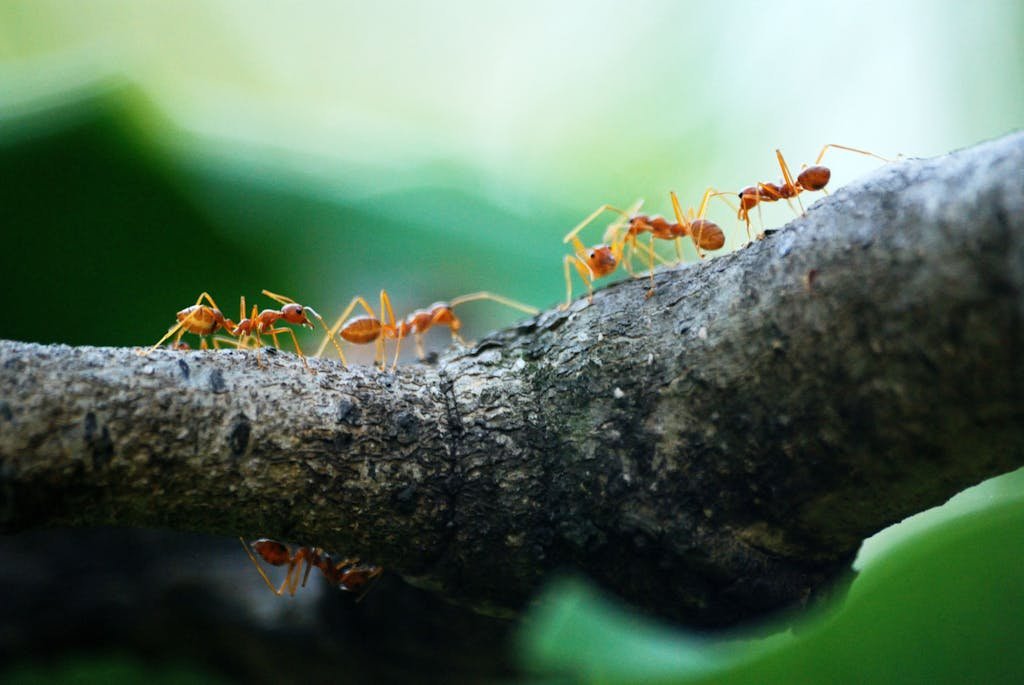Ants
Ants are social insects that live in highly organized colonies, ranging from a few dozen to thousands of individuals. They are a common household and garden pest, seeking food, water, and shelter in kitchens, gardens, and other accessible areas. Ant species vary widely, with some known for stinging, while others may damage structures.
Appearance
Ants have segmented bodies with three distinct parts: head, thorax, and abdomen. They come in various sizes and colors, from tiny, light-colored sugar ants to larger, black carpenter ants. All ants have elbowed antennae and strong mandibles.
Life Stages
Ants go through four stages: egg, larva, pupa, and adult. Queen ants lay eggs, which develop into larvae. After pupating, ants emerge as adults and take on specific roles within the colony, such as workers, soldiers, or reproductive ants.
Seasonal Activity
Ants are more active in warmer months, especially in spring and summer, when they seek food and expand their colonies. In colder climates, they may move indoors for warmth, increasing infestation risks.
Dangers and Risks
Health Risks: Although most ants are not dangerous, some species like fire ants can deliver painful stings that may cause allergic reactions. Pharaoh ants can spread bacteria and pathogens in kitchens, posing a contamination risk to food and surfaces.
Property Damage: Certain ants, such as carpenter ants, can cause structural damage by excavating wood to build their nests. This can weaken wooden structures over time, leading to costly repairs if not detected early.
Prevention and Control Tips
This section should include signs to watch for, simple DIY methods, and preventive measures to protect homes or properties from pests.
Prevention Methods
Keep food sealed in airtight containers and clean up spills promptly. Seal cracks and gaps around windows, doors, and foundations to block entry points. Trim vegetation away from the house to reduce access routes.
Signs of Infestation
Trails of ants leading to food sources, visible nests in soil or wood, and discarded wings from swarming ants are common indicators of an infestation.
DIY Measures
Use bait traps and ant sprays around entry points and nests. Wipe down surfaces with vinegar or lemon juice to remove ant scent trails.
When to Contact a Professional
Professional help is necessary if DIY efforts fail, if there are signs of structural damage, or if dealing with aggressive species like fire ants.
Trap Kill’s Approach to Control
Customized Treatment Plans:
Trap Kill uses targeted baiting, perimeter treatments, and dusting to eliminate ant colonies effectively. Our focus is on disrupting the colony and preventing re-entry by sealing entry points.
Certified, Eco-Friendly Solutions:
We prioritize eco-friendly baits and insecticides that are safe for children, pets, and the environment. Follow-up visits ensure that ant populations are under control and do not return.














